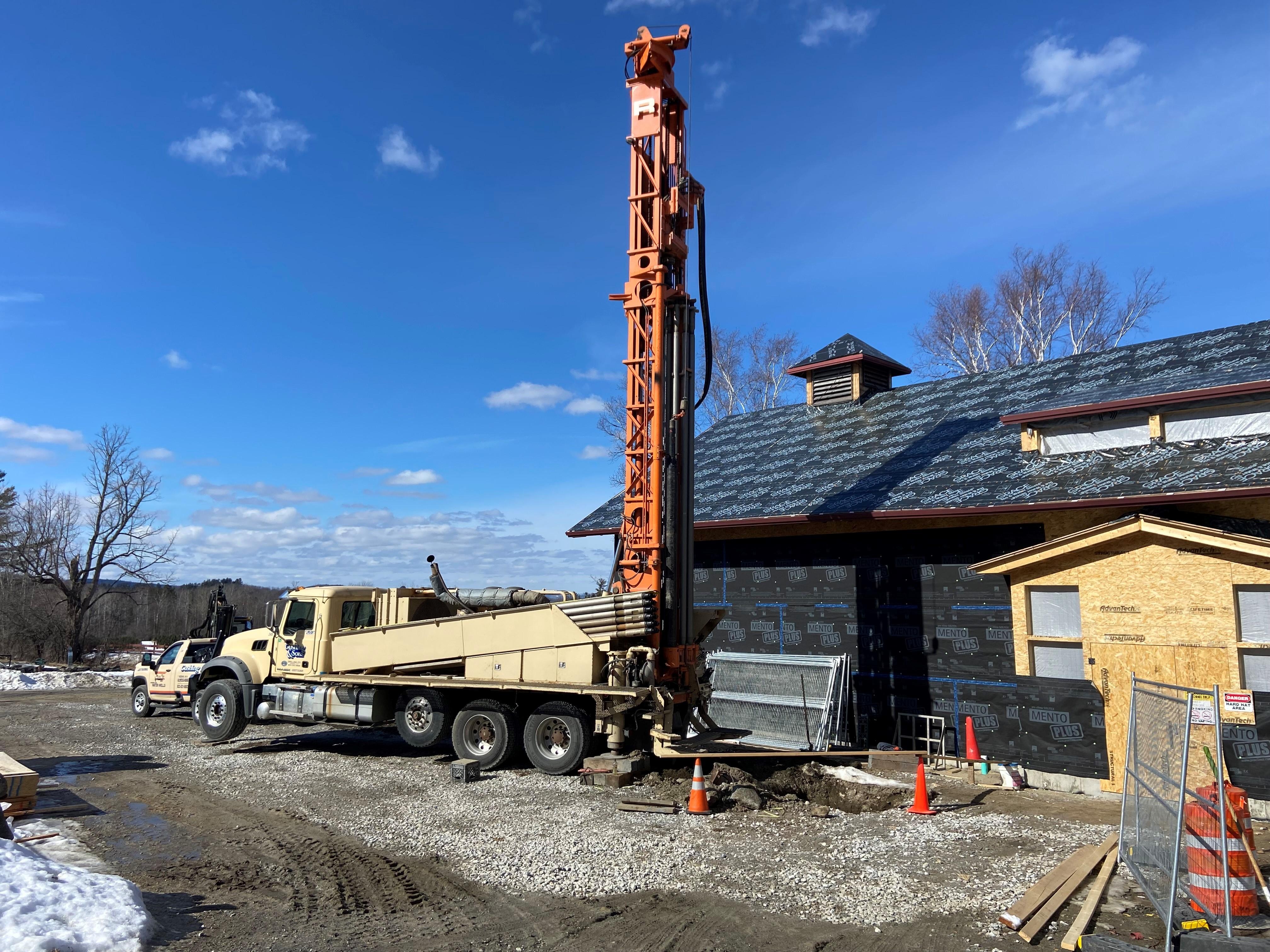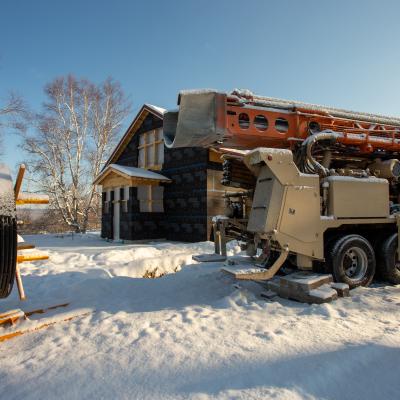
Four, 500-foot wells were drilled by Cushing & Son near the Carriage Barn. The geothermal system will help turn the Carriage Barn become a net-zero building as it's renovated into the North Country headquarters of the Forest Society.
As part of the ongoing restoration work at The Rocks, the first phase of the geothermal project at the Carriage Barn has been completed. The next phase will be the installation of the mechanical system.
The geothermal system will be a closed loop system fed by four wells, which were just drilled by Cushing & Son, powered by three ground source heat pumps located in the building. The pumps will provide a continuous flow of water at 50-55 degrees Fahrenheit, which enables cooling on warm days and heating on cool days.

The 1884 Carriage Barn is undergoing renovations that retain its grand stone and shingle-style character while converting the interior into an energy-efficient, net-zero education center, with classrooms, event space, offices, and public facilities. The renovated building is due to open to the public in the fall, at which point visitors will be able to see the energy systems in action and learn more about the operations.
According to Bart Cushing, owner of Cushing & Son, each well has 1,000 feet of one-and-a-quarter inch tubing.
"The fluid will go from the heat pump in the building out through those holes and back in to heat and cool the building," Cushing said. "They're very energy efficient."
The other component of the plans for energy efficiency, solar power, was finished up in December by ReVision Energy. The solar array is made up of 180 photovoltaic solar panels spanning three, ground-mounted rows in a field next to the Carriage Barn. This 86.4-kilowatt array will produce over 100,000 kWh of clean solar energy each year and will power geothermal heat pumps. The project will offset 156,000 pounds of carbon annually, the equivalent to removing 15 passenger cars from the road.
“As we designed Forest Society North at The Rocks, achieving net-zero emissions was a high priority,” said Jack Savage. “The Forest Society has always been a leader in energy efficient building practices. When we expanded the Conservation Center in Concord by building the French Wing in 2000, it was the first LEED gold certified building in New England. Now the conversion of the Carriage Barn will demonstrate our conservation values and help educate others on net zero building techniques.”
